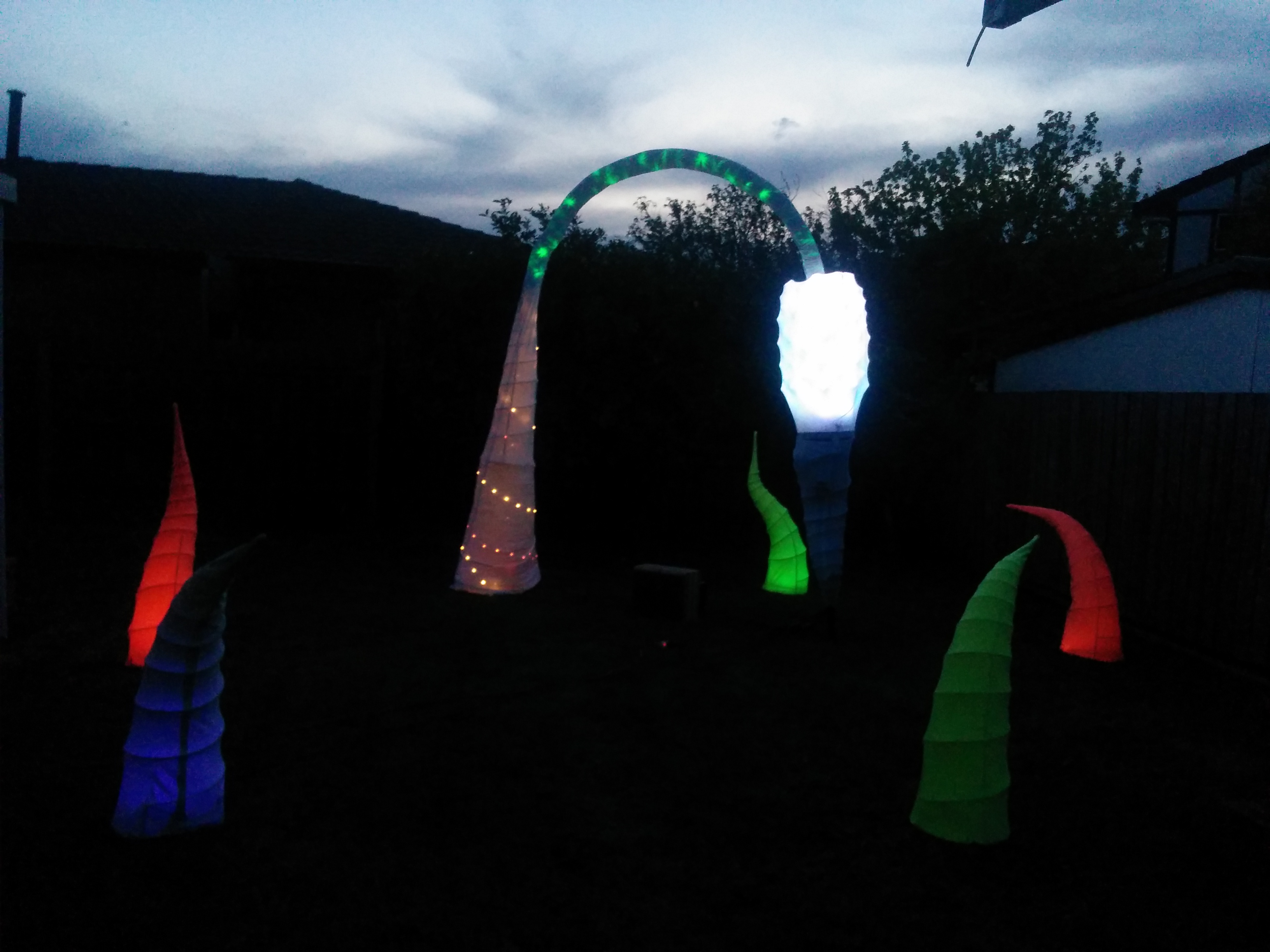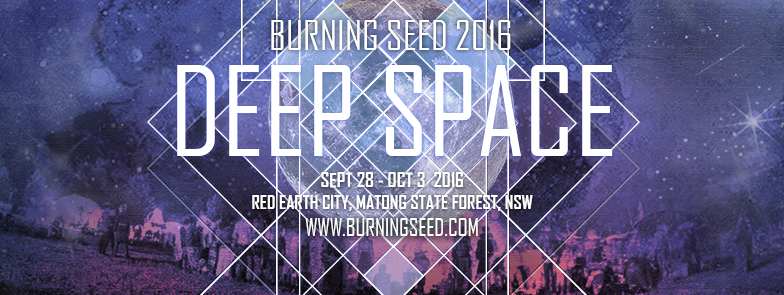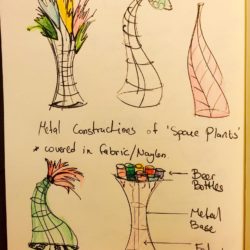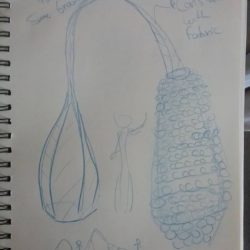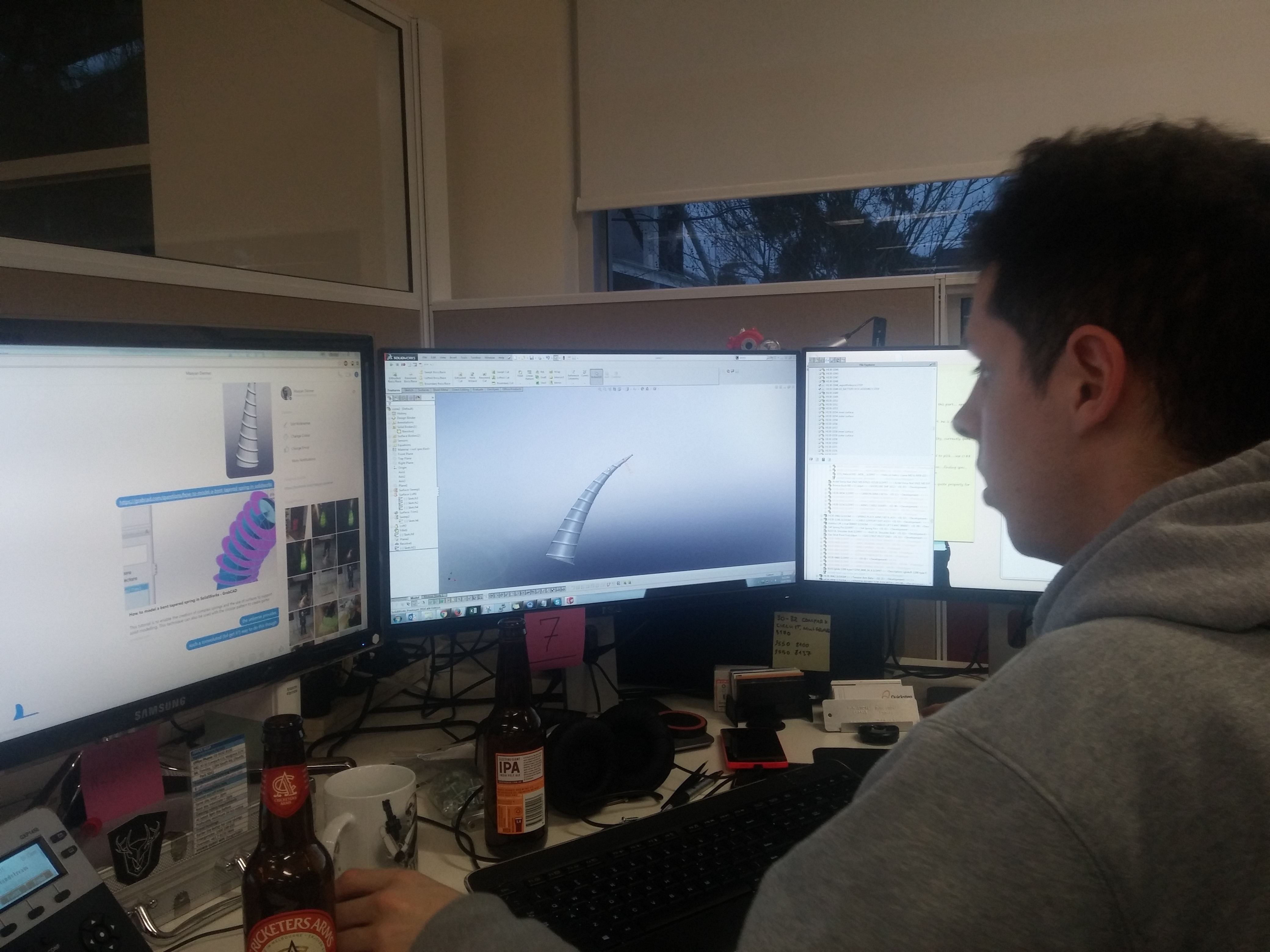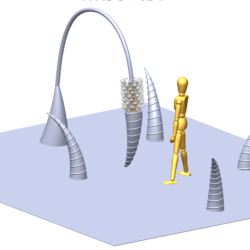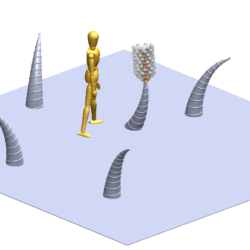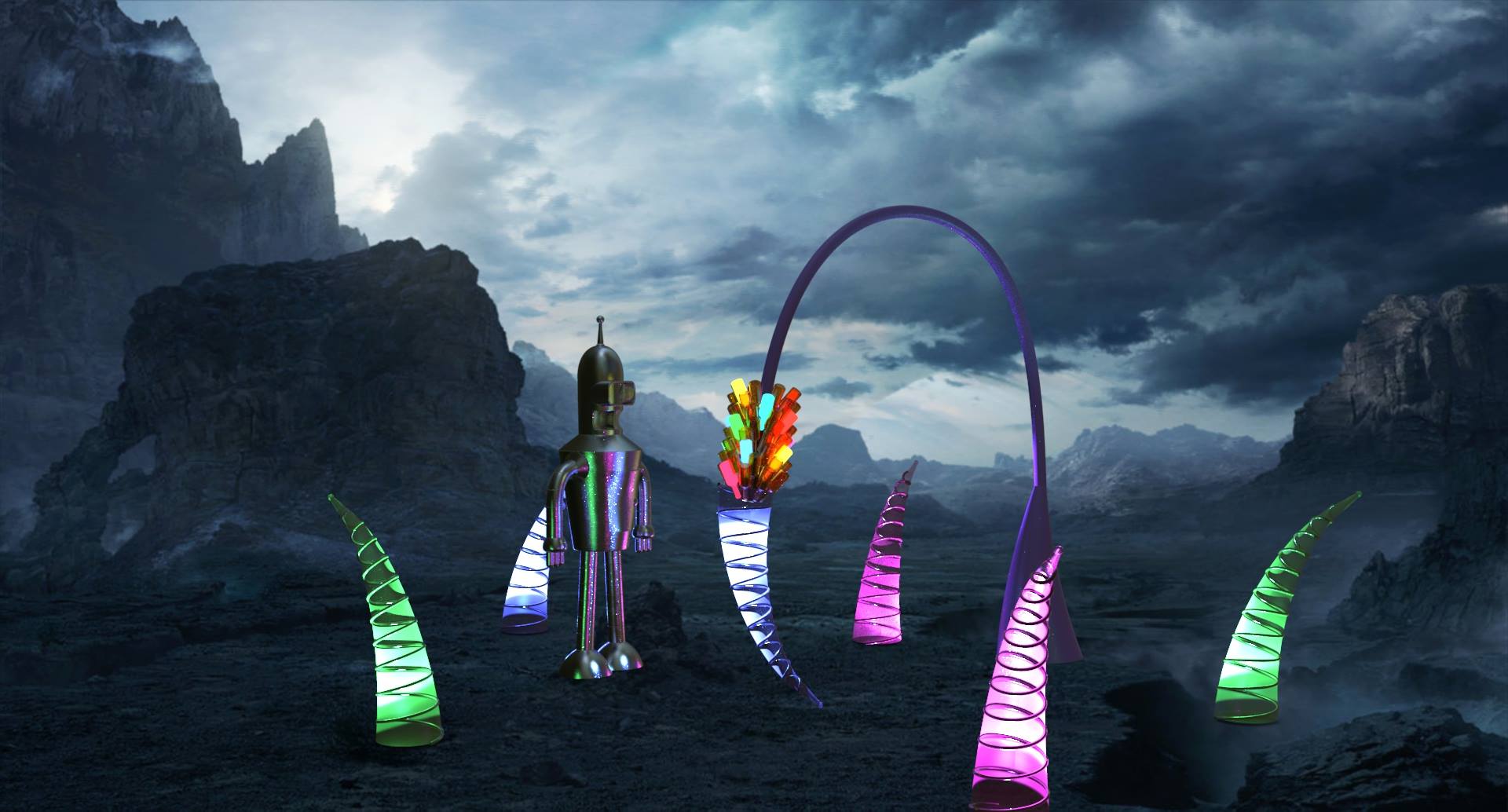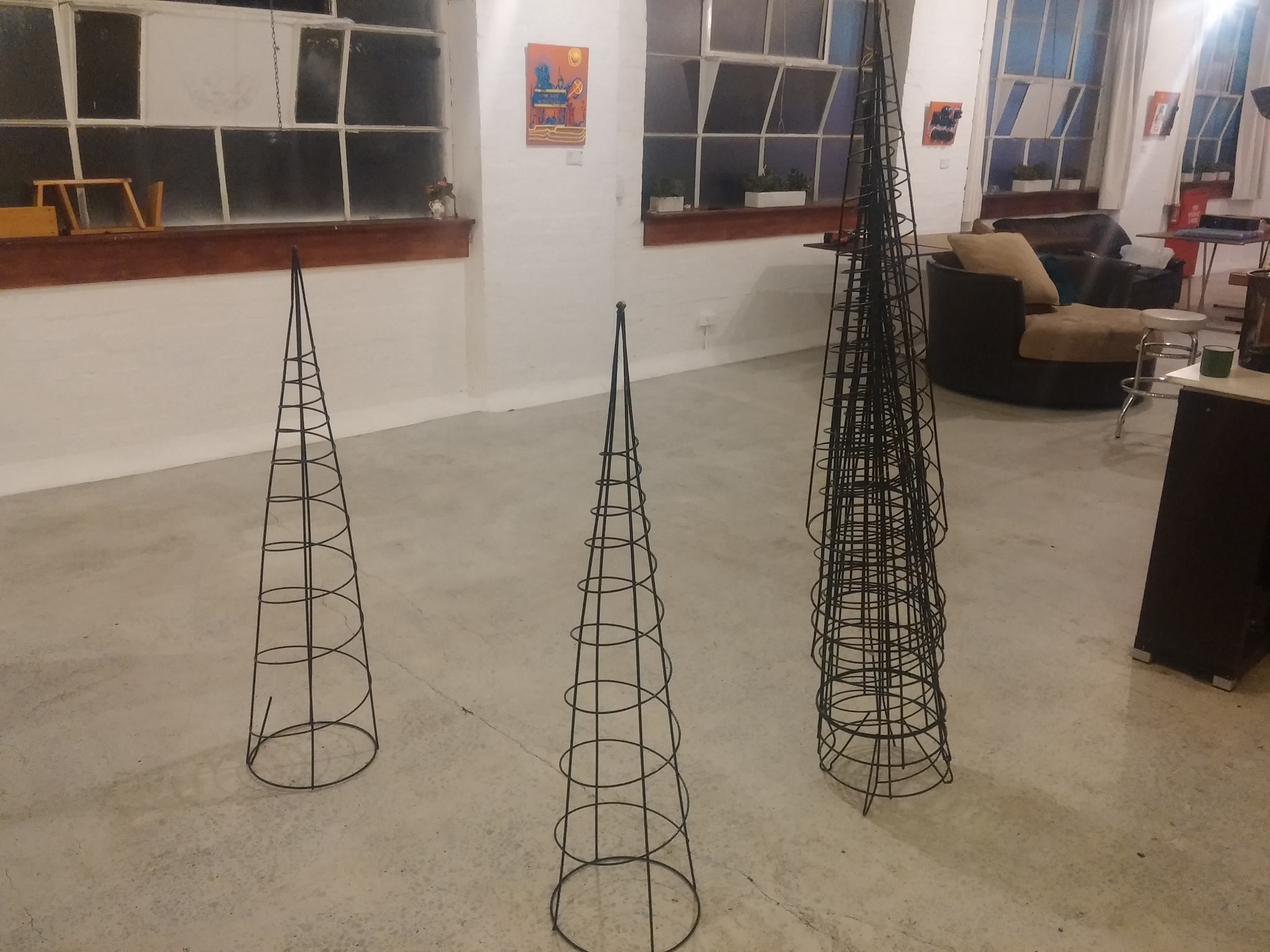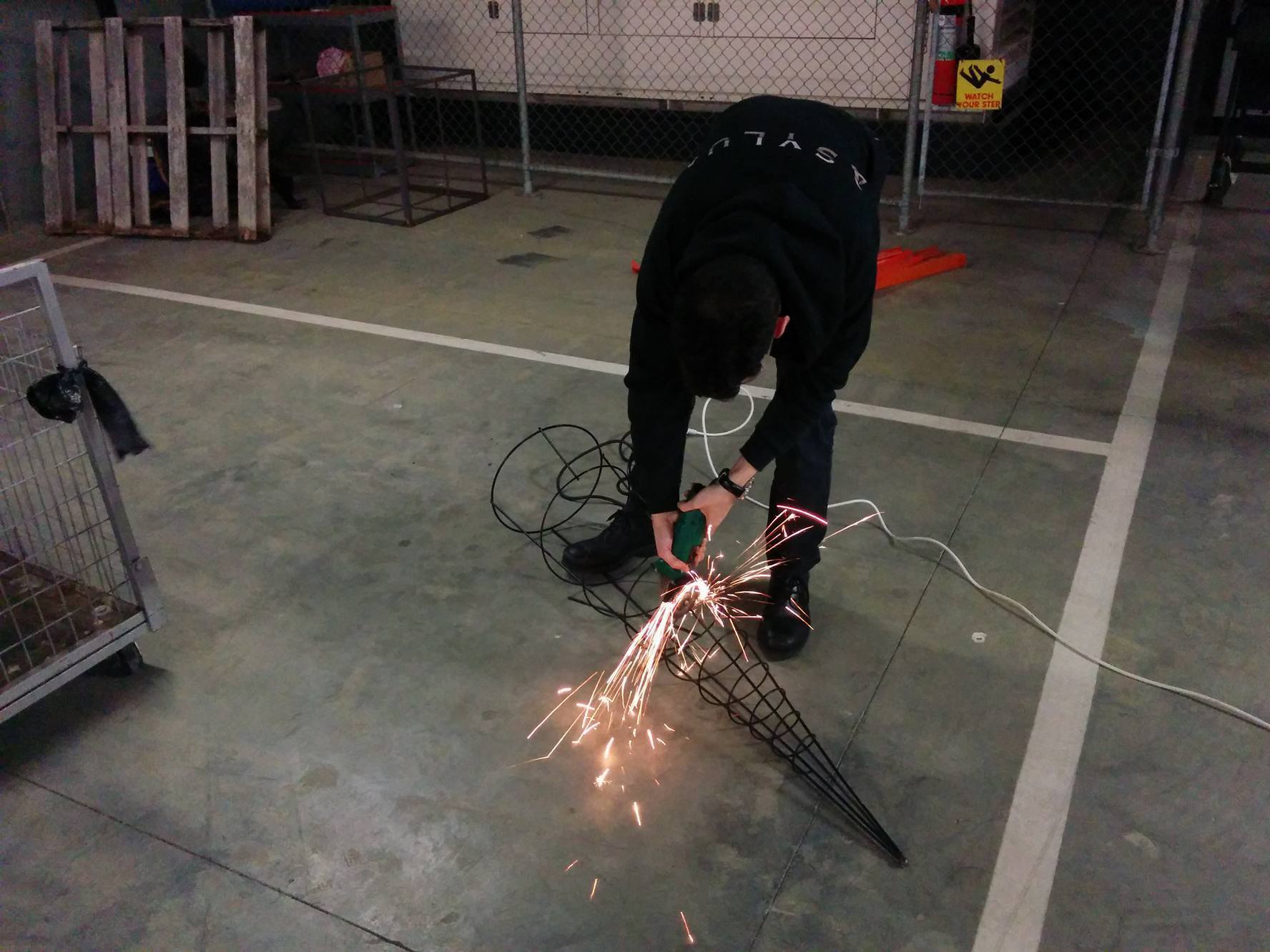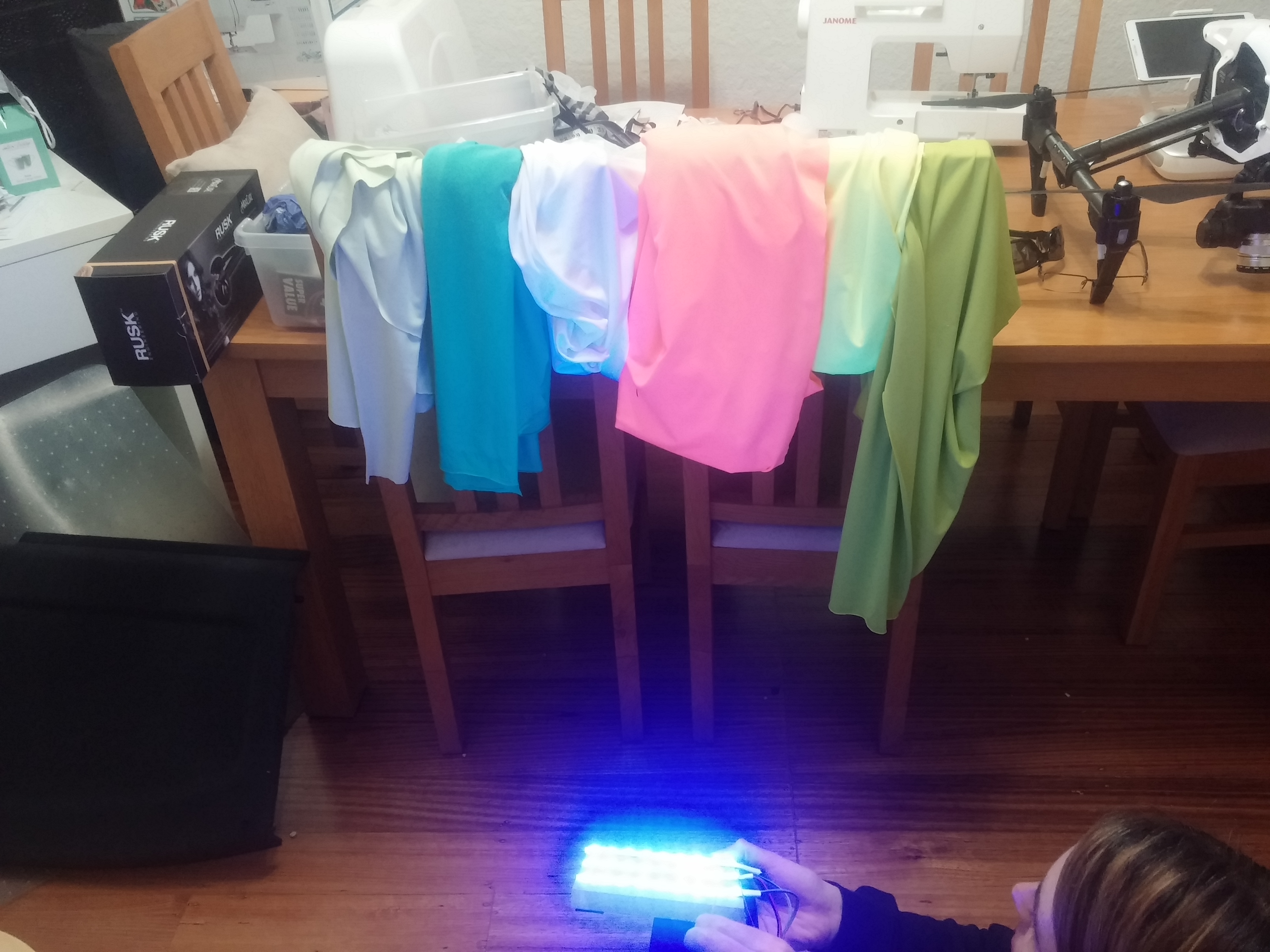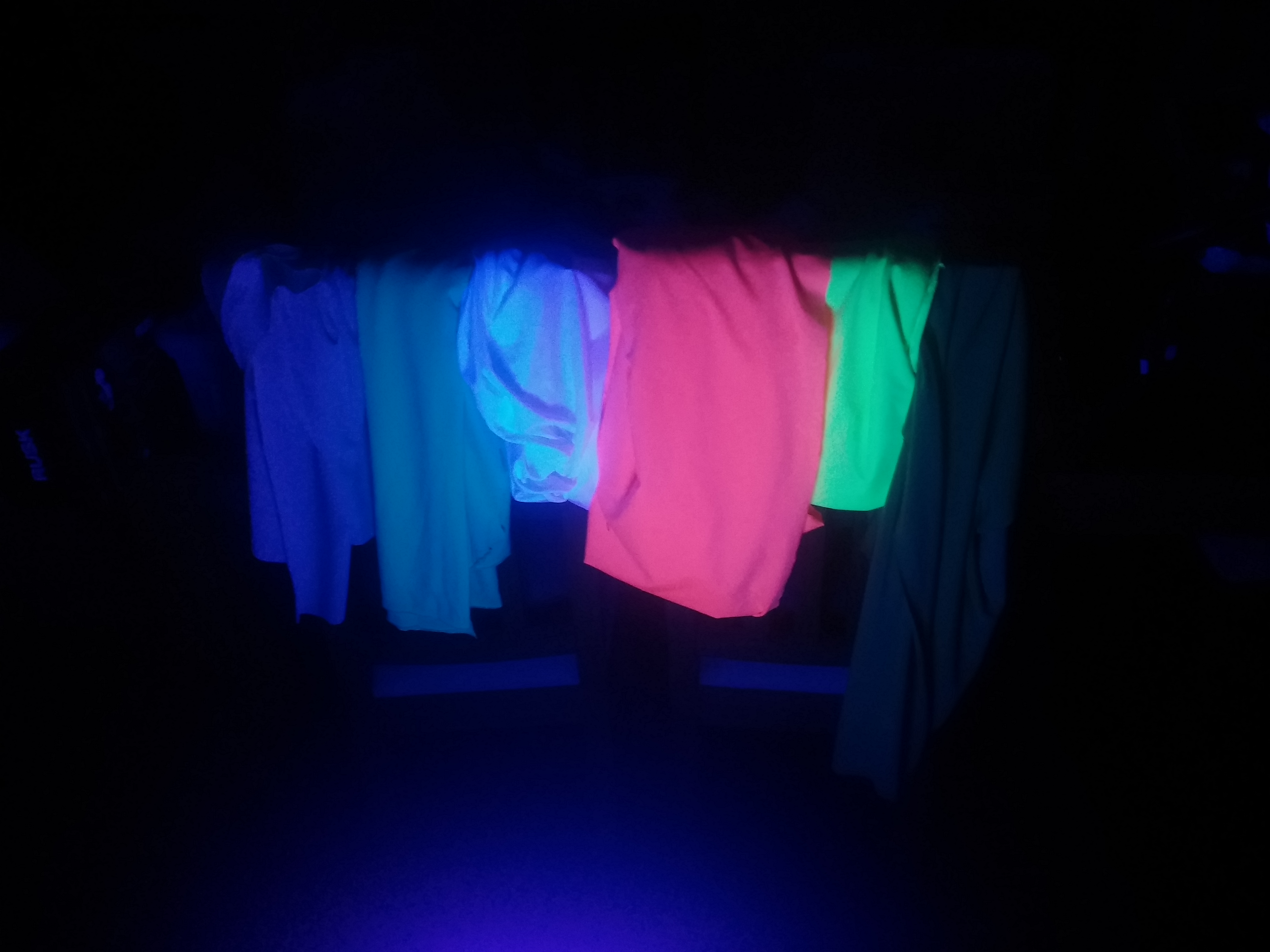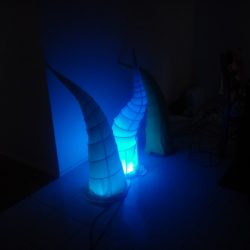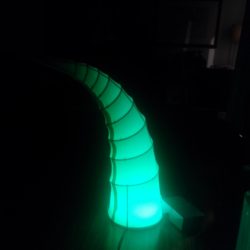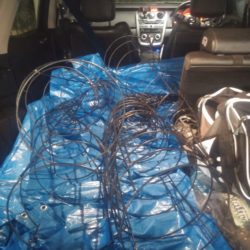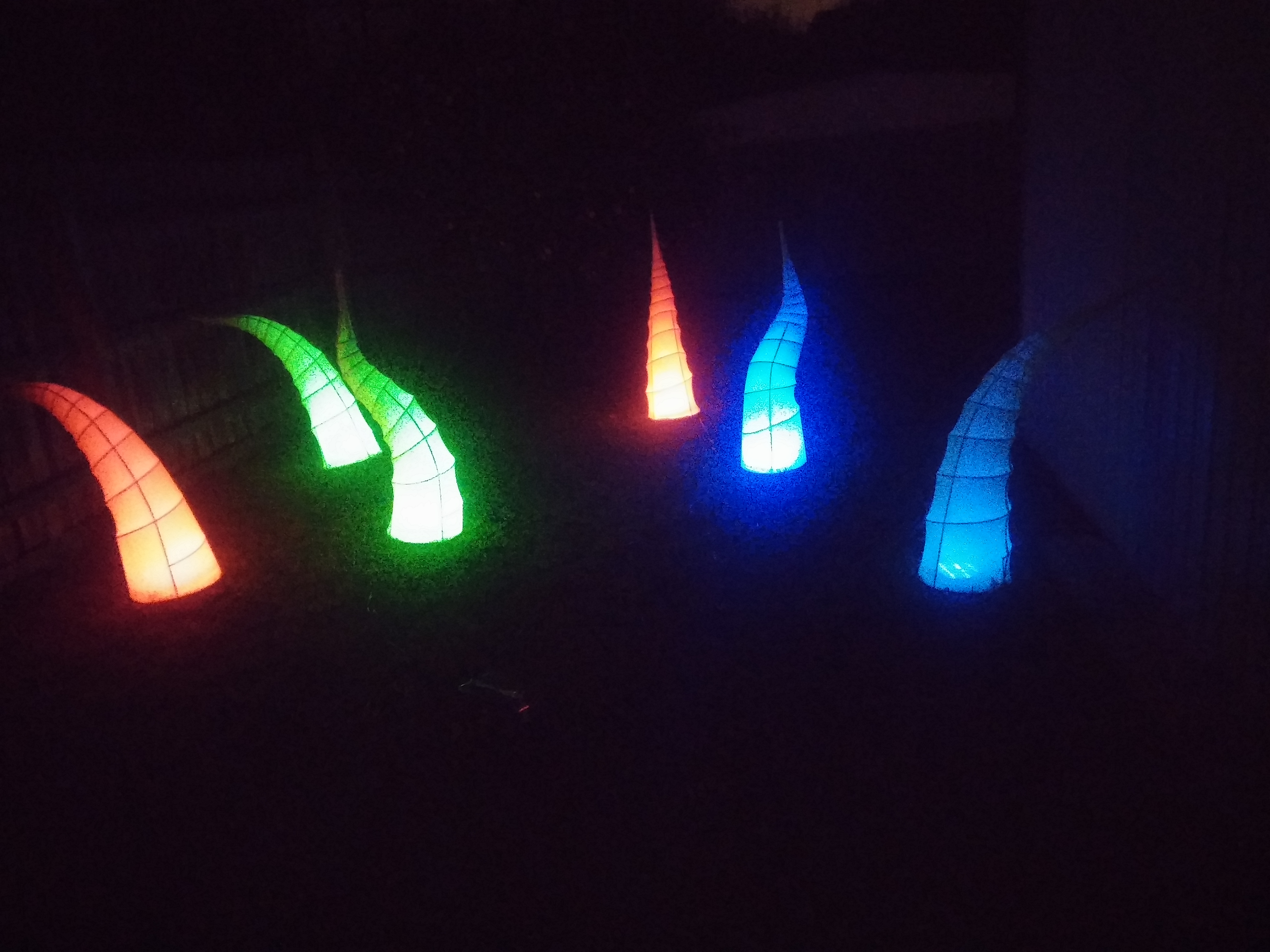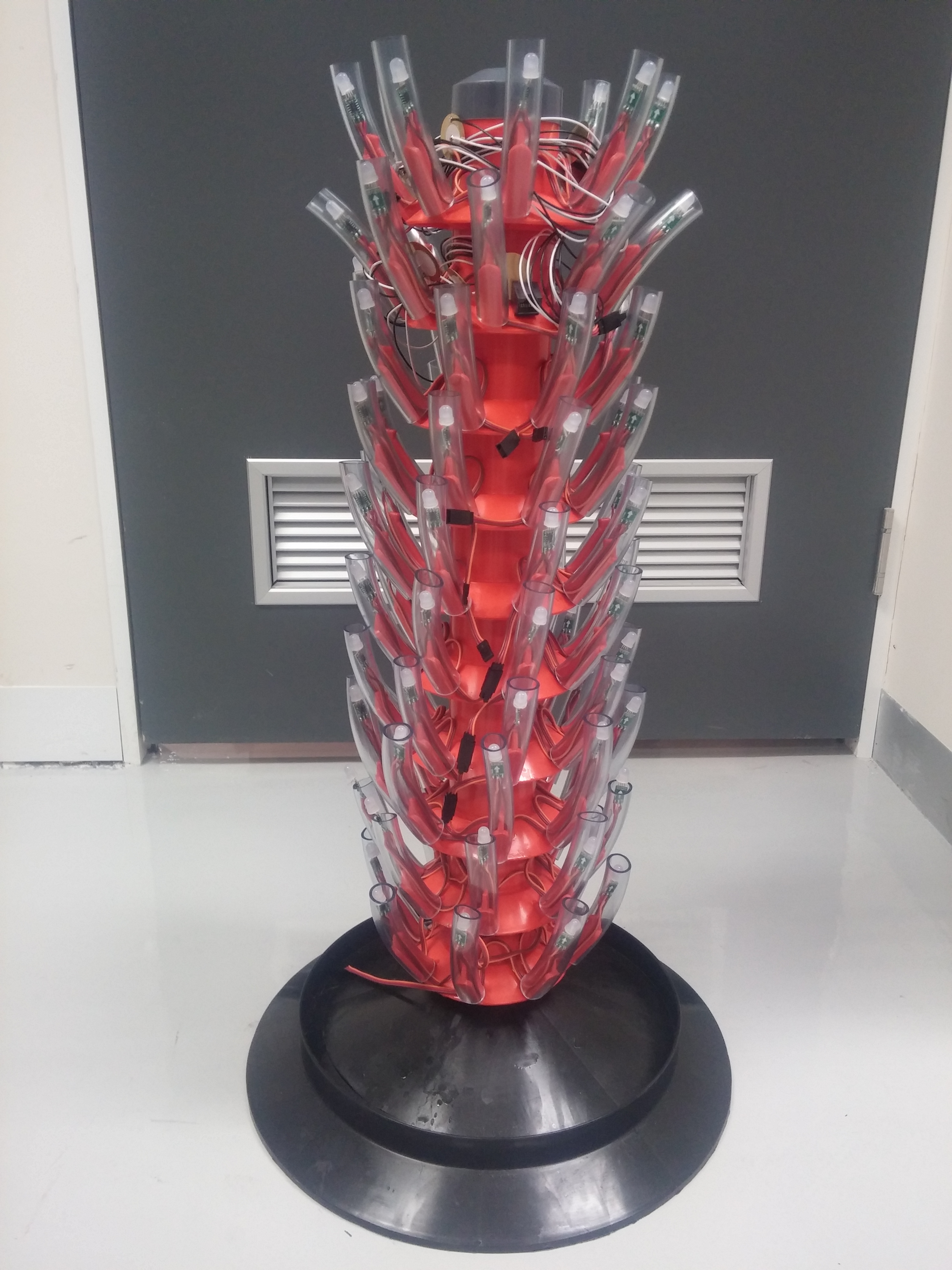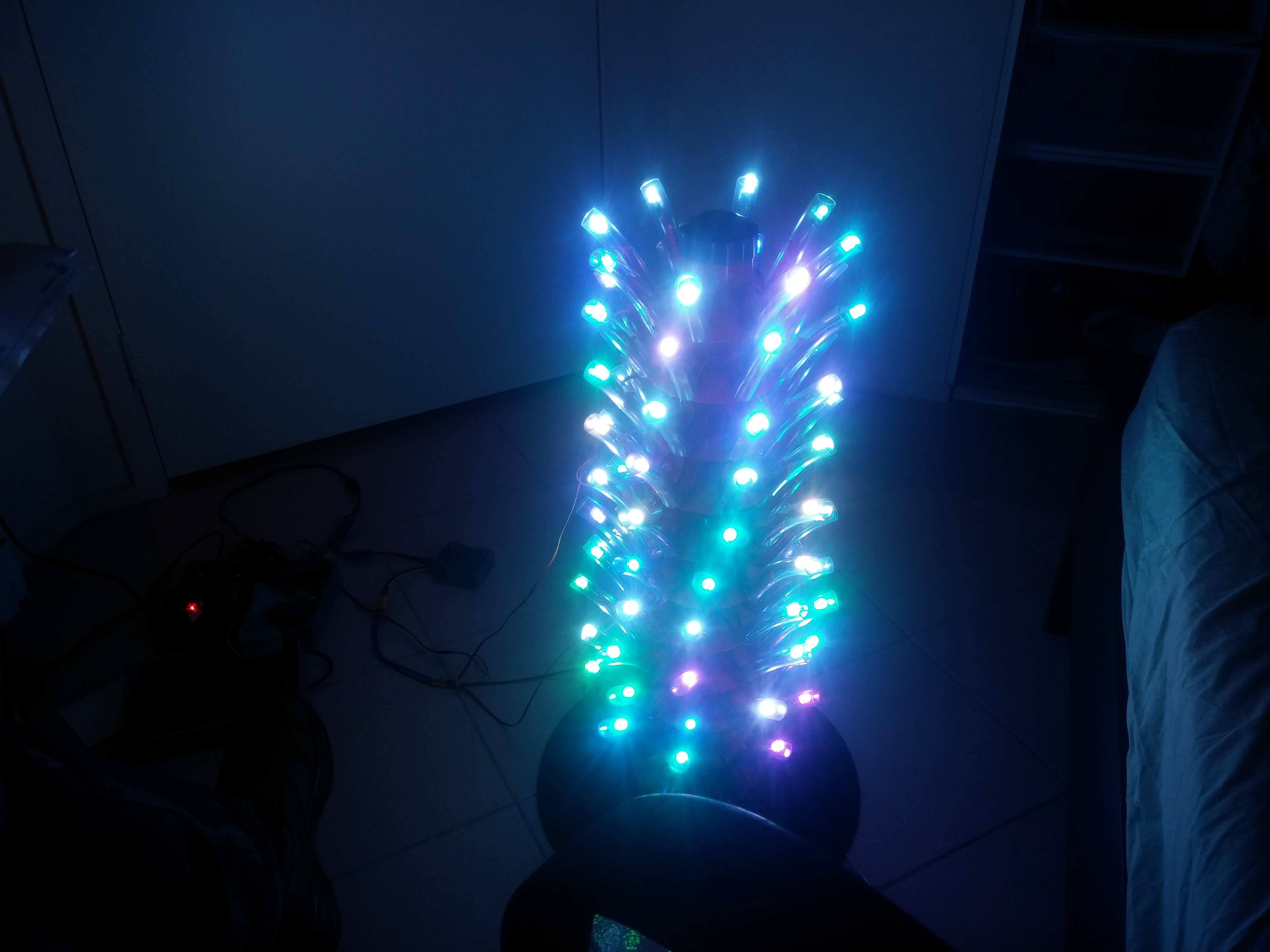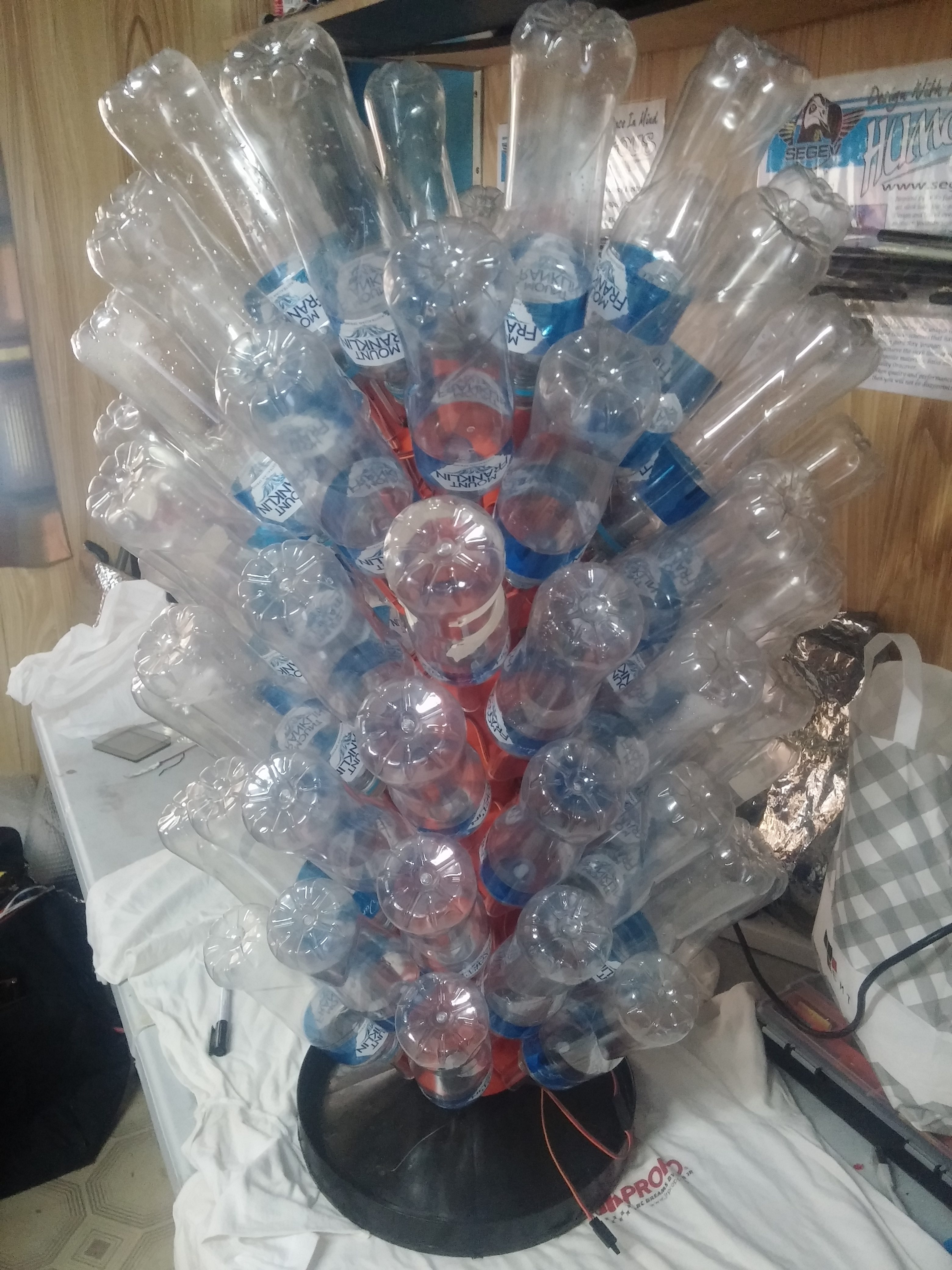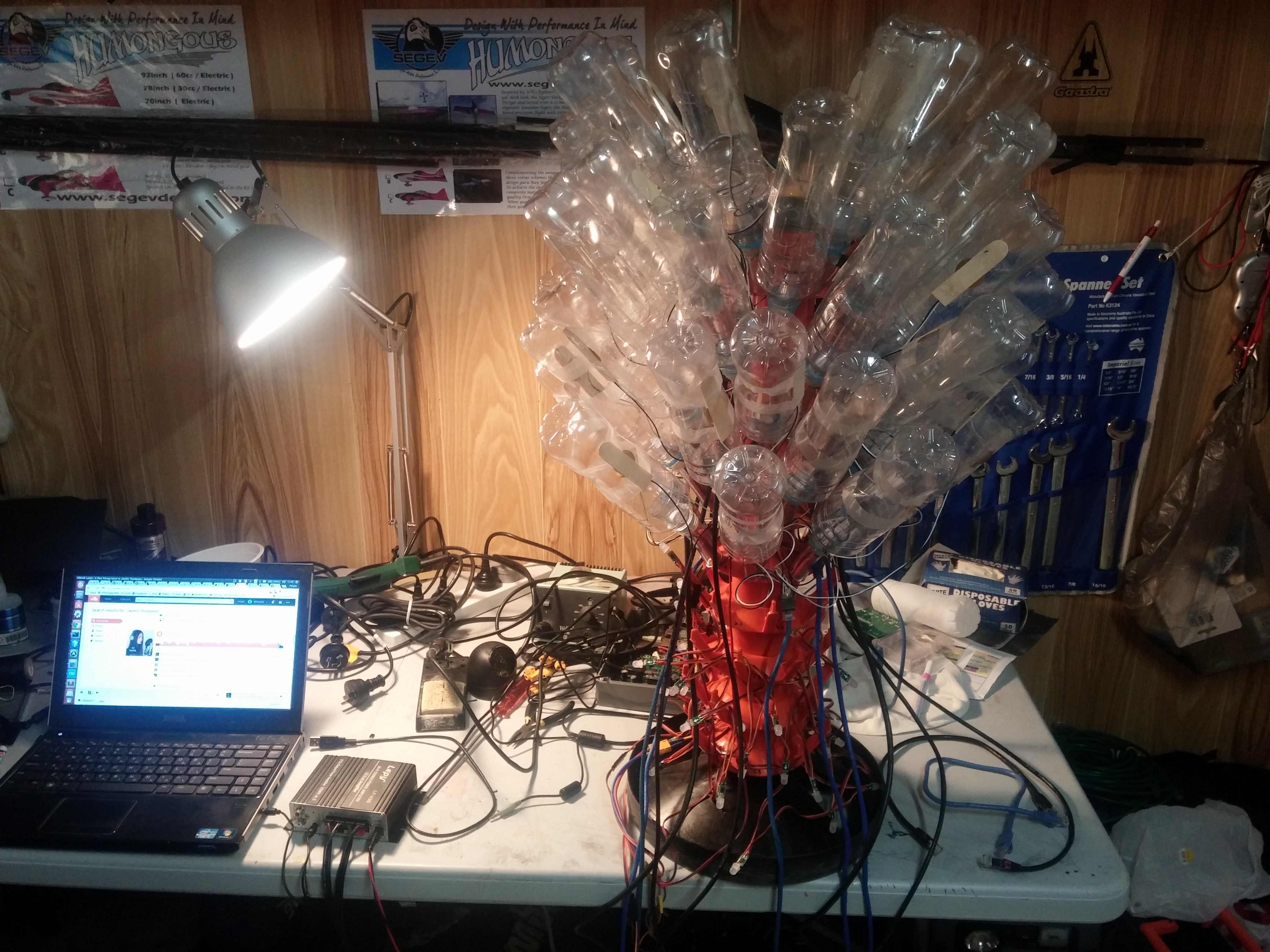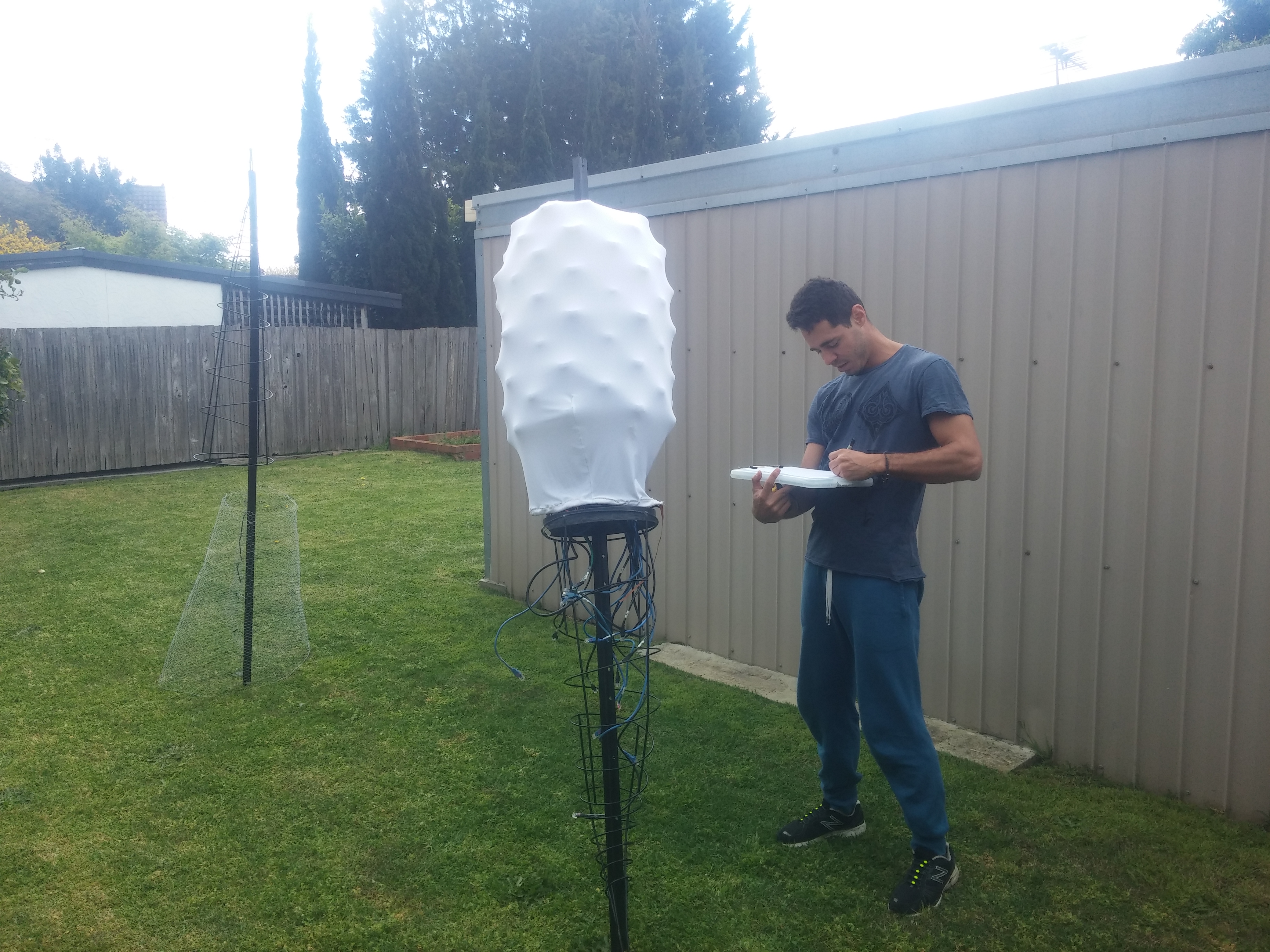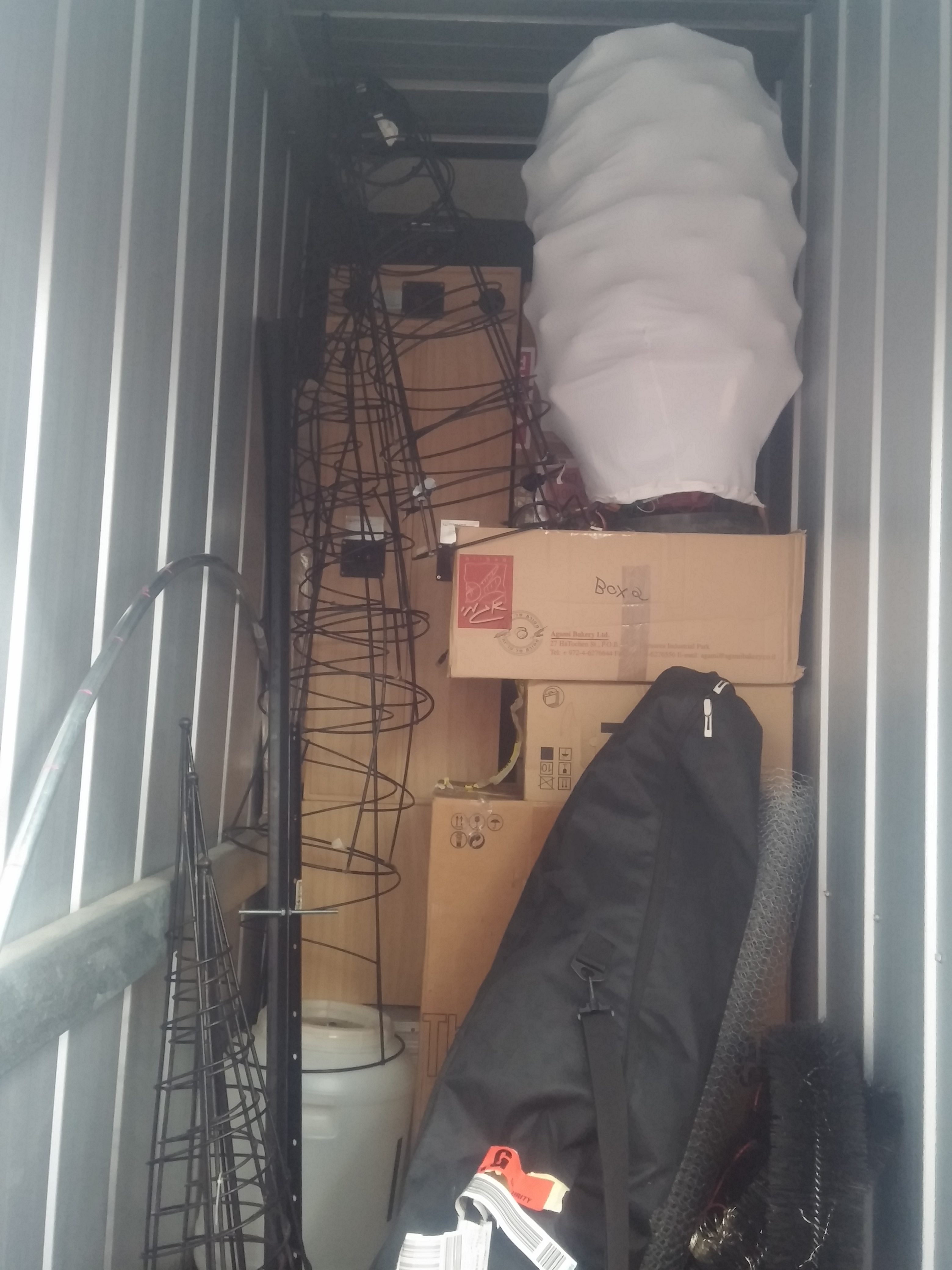Regional burns are a new-old thing that spread like a brush fire in the recent years. Burning SEED is South eastern Aussie Burn (Happens in New South Wales state) and this year the theme was Deep Space. As a super nerd with deep love to SciFi and the fact that I love the outdoors, grow up in a rural area and my mother runs a nursery plants the connection looked obvious – some kind of alien plant.
Meet the team:
But before we dive into the engineering-savvy details please meet the crew that made SpaceCorn happen:
Irin Kutmal – Landscape Architect on earth and Artist in space. Love to doodle ideas in my free time and get creative with an awesome team.
Blake Fuller – a tight rope walker and an abyss gazer.
Tim Bell – a mechanical engineer and this was my first foray into the world of art and it absolutely will not be the last!
Brett Nathan – Brett is a teacher and Gardner, and in his spare time he likes to tinker with beats and bloops
Maayan Dermer – Full time SpaceCorn pollinator and a part time Embedded software/hardware engineer
Stacey Nottage – Magician, coffee spiker and happy sewer
David Rodan – Space engineer (wannabe) from Venezuela

Concept
- An interactive musical instrument art piece in the shape of alien-plant from a distant planet – The plant is a living being that interacts with its surroundings via touch, light and sound, The idea is common in many sci-fi movies like Avatar, SG-1 and more.
- The project was design and planned in Agile and scalable state of mind because we didn’t know if we will manage to get resources via grants, fundraising, personal donations etc.. eventually we ended up building a small forest-garden-paddock with more plants and objects that communicate with each other.
- At the heart of the project lies the Raspberry Pi controller, an open source platform for hobbyists. The Pi controller will manage the sensors’ readings, data processing, sound generation and more. The project will be Open-Source Linux based, so anyone can download and build their own SpaceCorn. You can download it from my github.
The plan, resource, up-scaling and growing team:
To understand the journey that SpaceCorn went through I must share an important piece of information that got to do with the personal life. SpaceCorn was launched in mid April 2016. I moved to Australia in March 2016 (After visiting Melbourne the year before) – only a month and a half before we started the build. I didn’t know here too many Burners or even other people in Melbourne. From my perspective the artwork was not the only challenge, finding the right partners in crime was a huge chunk of it.
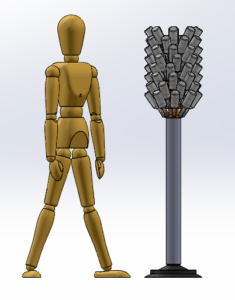
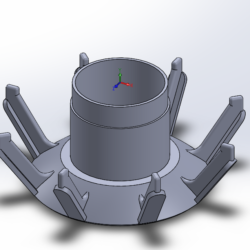
Because the fact that at the beginning the team didn’t have 8 amazing people – the initial design of the artwork was very modest. Just the Core of the SpaceCorn, no special tricks/design and just keeping the initial idea and functionality of having an interactive art piece by touch light and sound, the base of it is a beer drying tree rack. The drying beer tree rack will hold 80 bottles – why 80? The answer is piano keyboards.
People will touch the bottles and the SpaceCorn will generate sound and light accordingly – it will have 80 bottles, corresponding to the 80 keys on a piano – each bottle will represent a note/tone and a light
Each bottle’s pin will be equipped with a LED light and a knock sensor (similar to a touch sensor) – The sensor will sense the touch, the relevant note will be heard and the LED will emit light accordingly. An animation and feedback mechanism will be programmed into the SpaceCorn
Methodology:
The plan is simple – in order to be able to concentrate in the visibility, sound and interaction we decided to use as much Of-The-Shelf mechanical component that we can. The beer drying tree rack was the first one. It was definitely easier to have one ready and model it then manufacturing one.
It also come into consideration when we worked on the tentacles. We tried to use existing object, recycle and customize them.
Concept design:
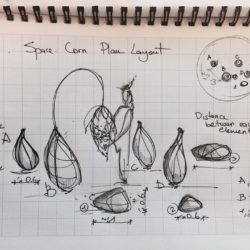 After Irin and Orlin joined the team we could actually have a proper concept design that had the SpaceCorn in the heart of it. The challenge was not simple due to the fact that Irin lives in Israel and Orlin in Canberra(Australia). Yet, after hard work a lot of ping-pong going back and forth between continents we came up with a design that created “a patch” of SpaceCorn in different growing stages. The final idea that was formed and was later developed to the final artwork is the there is one mature SpaceCorn in the middle of the patch and around it there are few more that are still underground. The SpaceCorn is starting to grow by sticking out it tiny tentacle head form the ground and then grow out of the ground through a stem. The pointy tiny tentacle head remains with him during all of its life until it actually facing towards the ground. We actually planned 2 options – depending on the resource and crew that we might or might not have – with or without the stem. After the art concept was done Tim modeled the SpaceCorn garden and Darby injected some psycho UV colors into it.
After Irin and Orlin joined the team we could actually have a proper concept design that had the SpaceCorn in the heart of it. The challenge was not simple due to the fact that Irin lives in Israel and Orlin in Canberra(Australia). Yet, after hard work a lot of ping-pong going back and forth between continents we came up with a design that created “a patch” of SpaceCorn in different growing stages. The final idea that was formed and was later developed to the final artwork is the there is one mature SpaceCorn in the middle of the patch and around it there are few more that are still underground. The SpaceCorn is starting to grow by sticking out it tiny tentacle head form the ground and then grow out of the ground through a stem. The pointy tiny tentacle head remains with him during all of its life until it actually facing towards the ground. We actually planned 2 options – depending on the resource and crew that we might or might not have – with or without the stem. After the art concept was done Tim modeled the SpaceCorn garden and Darby injected some psycho UV colors into it.
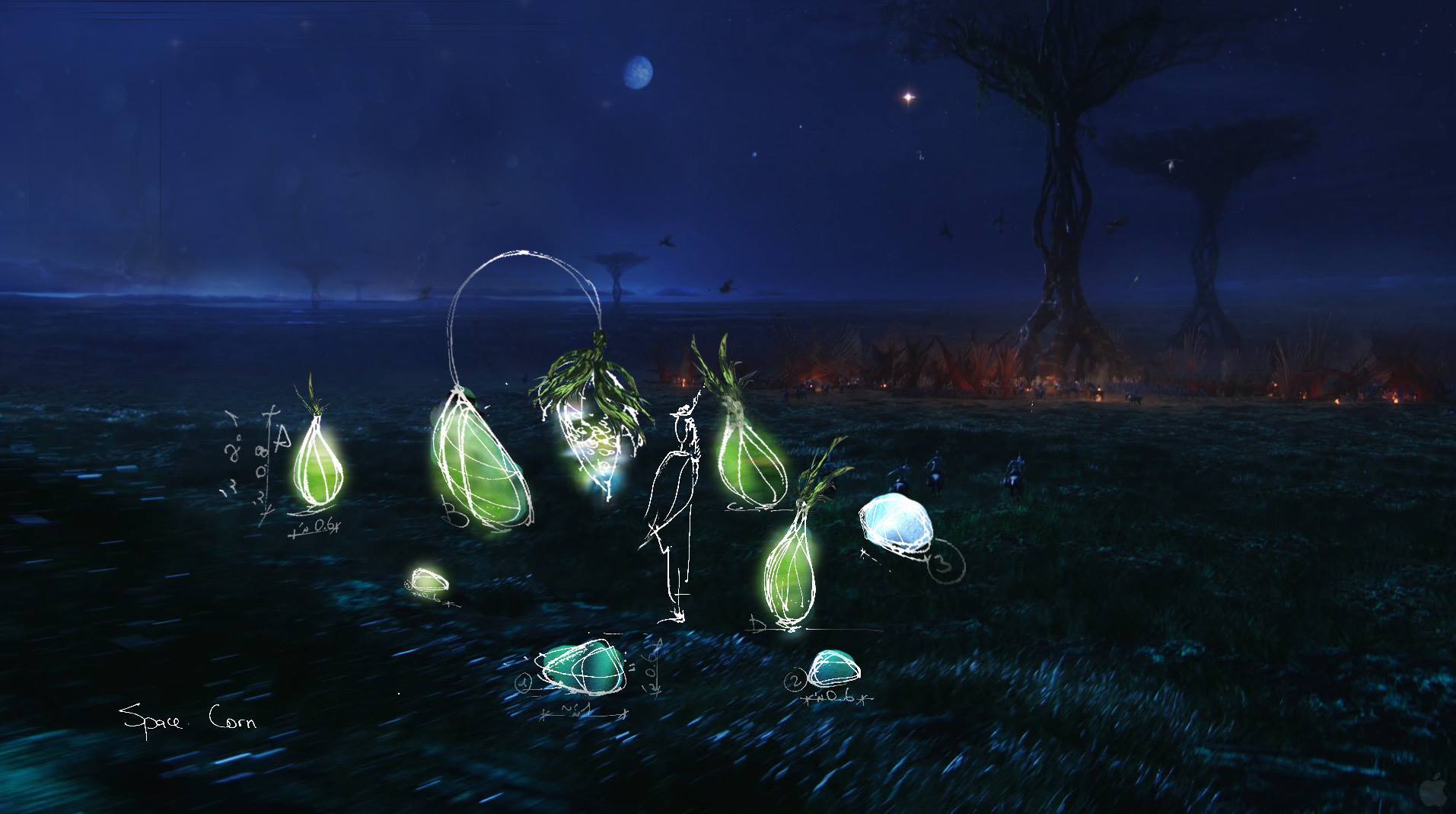
This is the actual 3D modeling of the 2 option: Stem and stemless. Eventually we managed to have it with a beautiful glowy stem 🙂
Block diagram, electronics and electro optics:
As was mention earlier – at the heart of the project lies the Raspberry Pi controller, an open source platform for hobbyists. The Pi controller is responsible to read the knock sensors (The tapping on the kernels) data processing, sound generation and communicate with the LED driver. Other elements in the SpaceCorn garden are also responsive to the SpaceCorn’s core touching. The LED driver is responsible to create the ripple effects on the kernel’s core whenever a kernel is begin touched/popped. That means that when a kernel is being popped the kernels around it are also effected. This kind of animation creates an organic look and feel of an organism rather than a design-engineered object.
This is the block diagram of the whole system architecture:
This is how it looks in the main control box:
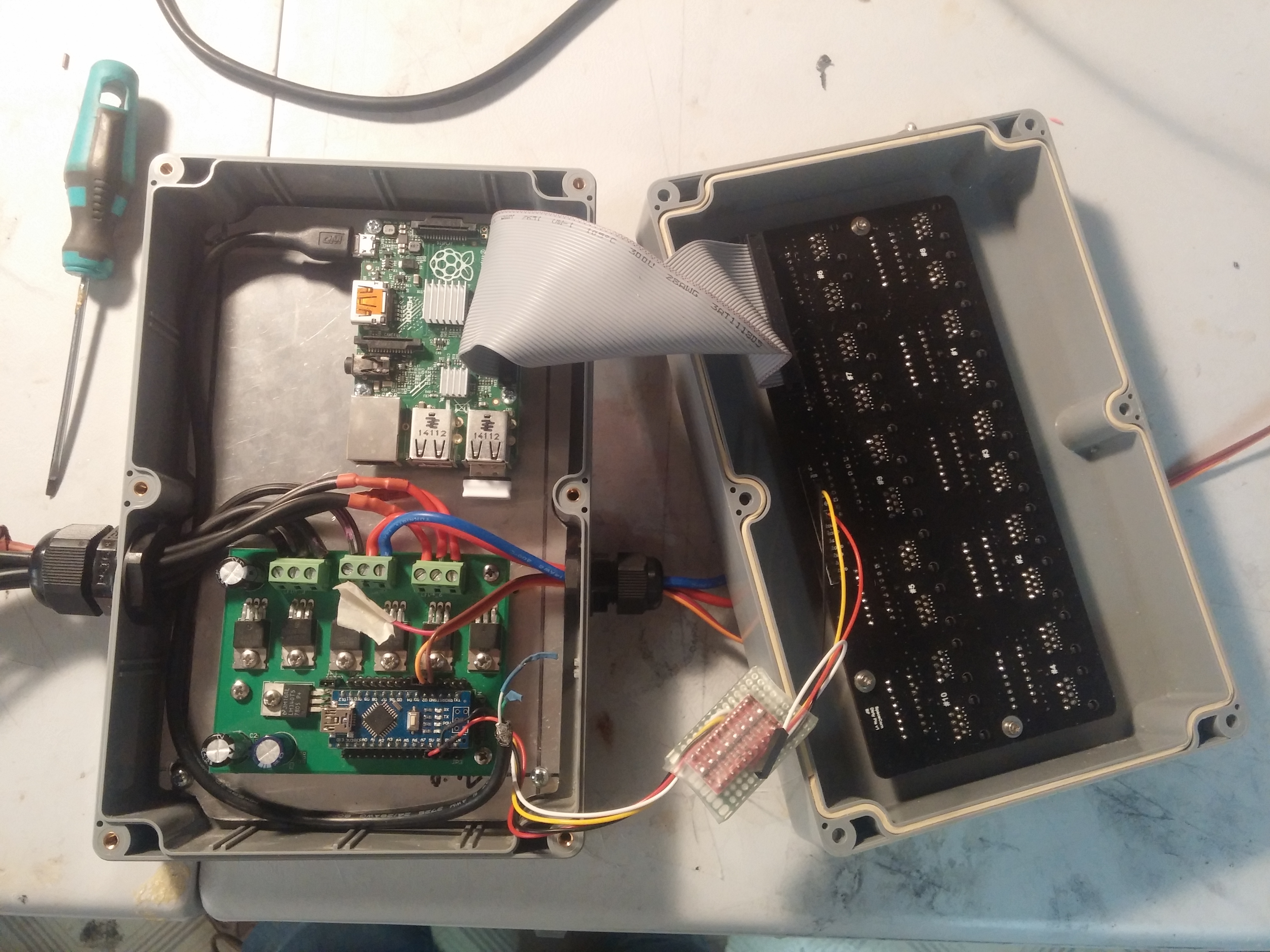
To support this architecture two custom made PCB where made and some converters-adapter modification to existing components:
- SpaceCorn PCB – holds up to 10 MCP3008 chips that are all connected via a SPI bus and RJ45 Ethernet cable which are constantly cyclically sampling the 80 piezo knock sensors in order to sense a touch in the bottles. Blake & I designed the PCB after we got it from the supplier he put it together – it worked tight on the first time – The amazing Blake.
- LED drivers – to control the UV lights of the tentacles and the fairy lights
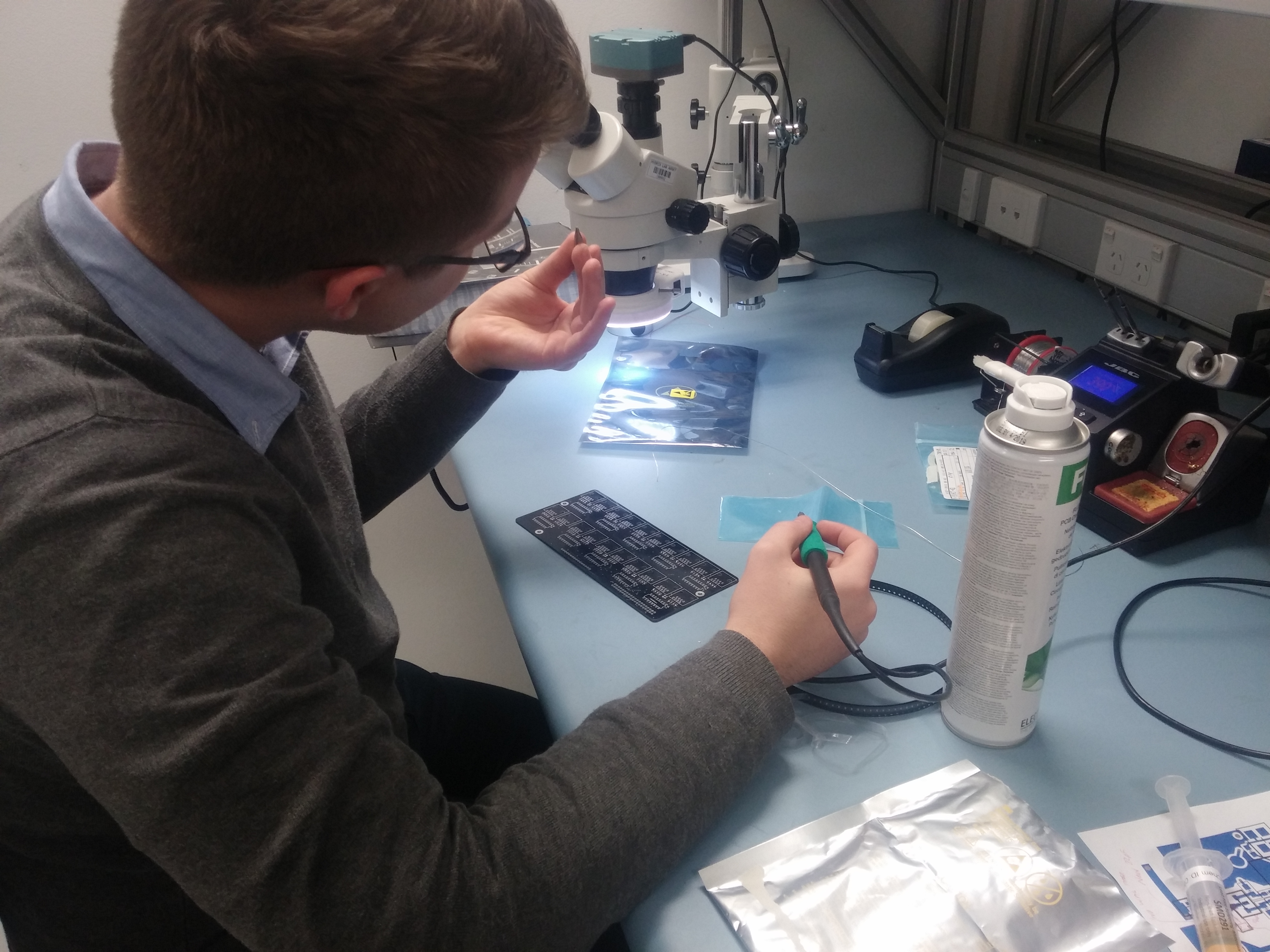
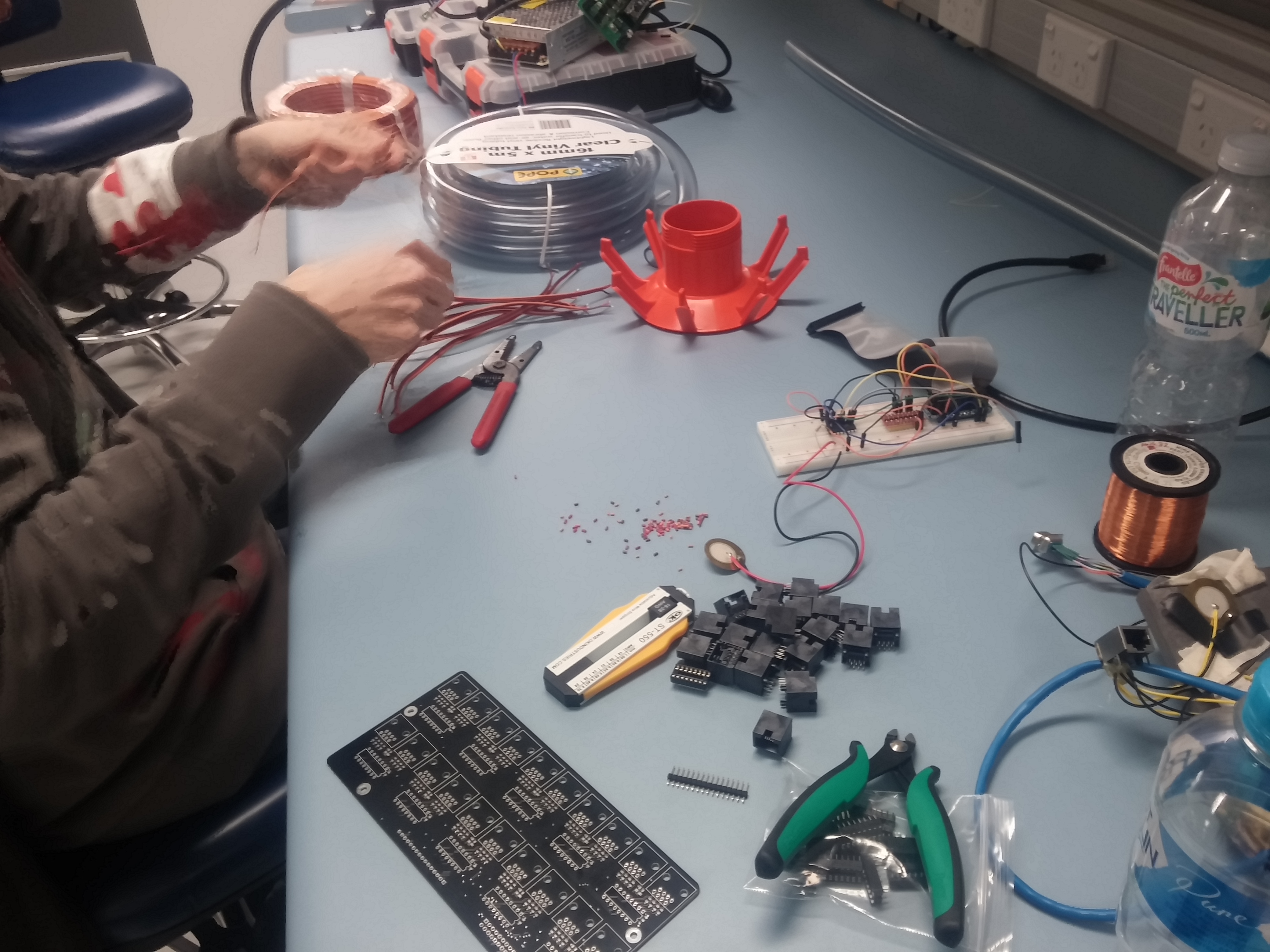
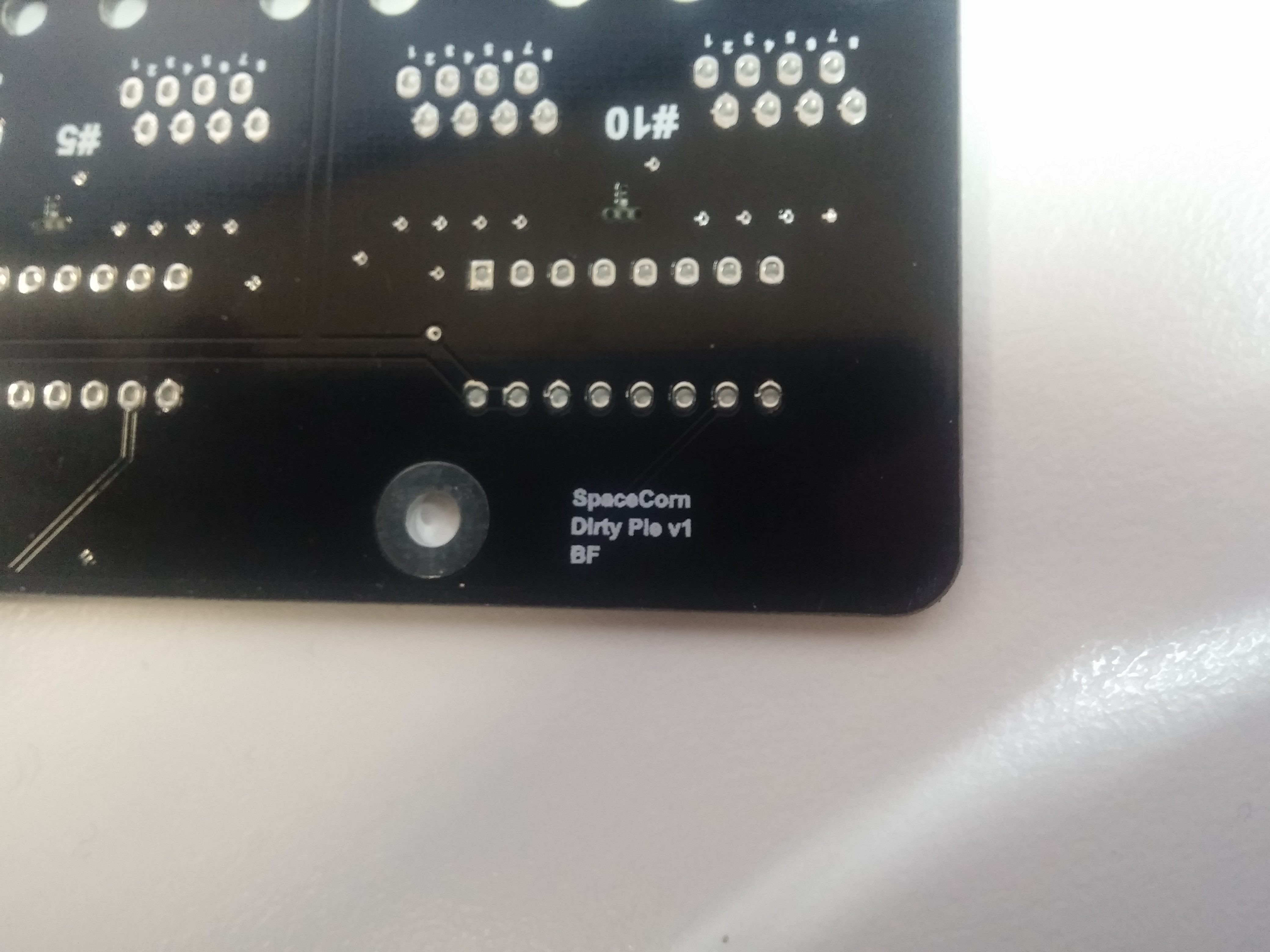

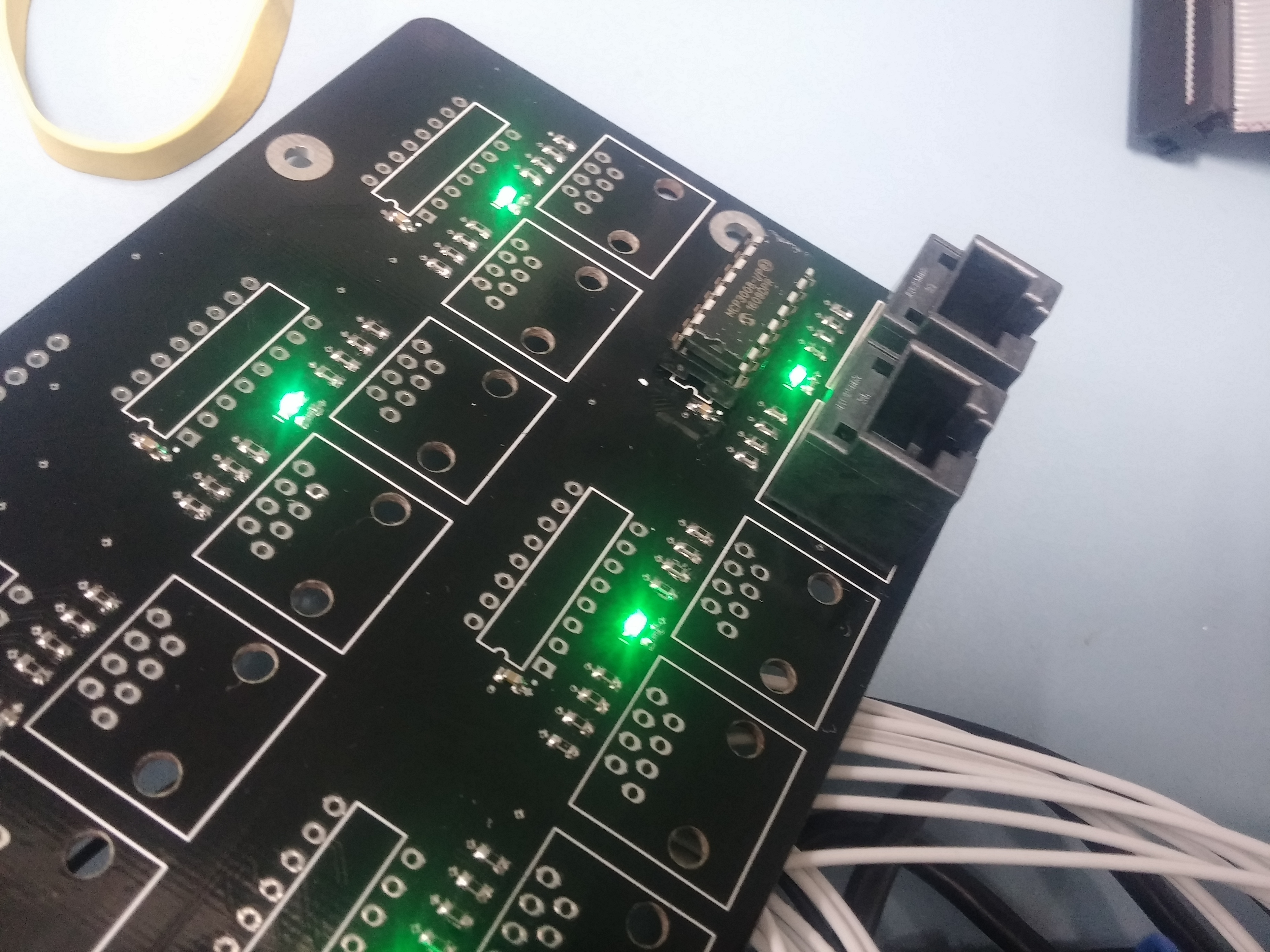
The tentacles:
To get the alien look-like plant that has an organic look & feel we wanted to use psychedelic-alien color and alien like shapes. We deformed garden cones and cut them so they could bend and have curves and round edges instead of clean geometric cone lines. As a result of the organic curved look and the fact that some support bars were removed the tentacles became a bit “springy” and frisky. It can be seen especially clearly when are being touched or when the wind is going through them – it added them a lot of character, authenticity and made them feel much more plant like than the metal skeleton that they are.
The next stage was the skin. The artwork is primarily a night one (although it can be also be played during the day) so picking the right skin that will defuse the black UV light was crucial. We bought couple of fluorescent fabric to test with the 12V UV LED strips:
4 of the 6 fabrics worked well, actually extremely well – due to the color of the fabric and the lighting conditions the artwork looks completely different during the day than during the night when it was blooming magnificently.
After the almighty Stacey sewed the first couple of skins we could see the first piece of or SpaceCorn puzzle for the first time – it was exciting, and when we put underneath the tentacle the UV lights we knew we hit the bull’s-eye. We created a “breath” effect (fade in-out) by controlling the intensity and pulse of the tentacles via our custom made LED driver using PWM for each tentacle indigenerics.com.
After we were happy with the looks of the tentacles we faced another problem: How are we going to pin them to the ground? Our constraints were:
- Easily removable fabrics – we wanted to be able to remove the fabric so we could wash it if needed or replace it if we will decide that the color is not right or we have a different theme
- Clean look – we didn’t want any things that will be sticking out the bottom circumference of the tentacles
- We had to come up with a solution that won’t interfere with the light sources (12V UV light), create shadows or in general make our life harder during the installation.
- Modular stackable solution –
because till a late point in time I didn’t know how many of the crew members could go to Burning SEED I had to fit the whole artwork in my car. It meant that we could not weld permanent metal part to the bottom of the tentacles that would prevent them from being able to be stacked on top of each other. - Any solution that we will come up with should be “fabric safe” it means that we can not have sharp edges or anything else that will rip the fabric
So we came up with this simple module crossbar design that uses 4 tent pegs (8mm)
The core:
The whole idea of the artwork is lying in the core. The core contains the sensors, lights and the sounds that is being emitted are a direct result of interacting with the core through touch. Most of the time in this project went on designing, building and testing the core while making sure that the interaction experience is being delivered and it feels like touching a plant than a man-made object. When looking at the artwork for a far, it looks a bit like an angler fish with the core as the “bait”. That way the lights and the shape of the structure is luring the people to come, take a look and play with it.
The base of the core is made out the beer drying tree rack, an addressable chain of LEDs and 2 difusers: plastic bottles and fabric:
When we first started to design the core we were planning to use clear beer bottles because of couple of reasons:
1. It is a drying beer rack (dah!) and the distance between the pins that holds the bottles, the shape and the load it was designed to carry made sense to use beer bottles
2. Rigidity – that was the main concern. Due to the fact that we are using piezo knock sensors, we are measuring shock-knock. If from some reason the hit-knock will be dumper too much the sensor would not be able to notice the hit. The more solid and rigid material we could use to mount the sensors on and hit, the odds of reading the hit are better. We hot-glued the bottles to a clear pipe and pushed it on top of the pins of the drying rack.
But, using glass bottles presented other couple challenges, the primary one was safety. This artwork is going to full-on 5 days of music and art festival. If for some reason one of the participants is a bit too excited it could end badly. Another issue was the weight. The original design of the plastic rack was not planned to carry all the weight when it is sticking 1.5 meter above ground – it was designed to be placed directly on the ground. After we started to play with the beer bottles we realized we might want to look at different options like plastic bottles. The challenge was to find a plastic bottle that has the same characteristics as beer bottle regrading the size (height, diameter and length) and that it could be easily mounted on the rack while remaining rigid enough. We found the solution in a simple Mount Franklin 500ml plastic bottle that were widely use in my work place.
As a result of switching from the beer bottles to the plastic ones we had 2 side effects:
1. Me leaving the office every once in a while with a huge black nylon bag, pinching used bottles from everywhere (I swear I did not take any DNA samples) and getting strange looks from my colleagues.
2. Because we were not sure till the middle of the project that we are going to use glass bottles we designed the core to be anchored to the ground using a star picket so we could have something solid and reliable that could hold the weight of the core. Although the art concept design shown a “hanging fruit” (the core of SpaceCorn) the fact that is was not really hanging from the stem added much more stability to the structure and allowed us have more things like the electronics hanging on the star picket-under the core-inside the upside down tentacle. This would be also the nerve center of the whole artwork regarding the electronics. Here you can see the our Venezuelan space engineer doing the math 🙂
Integration, logic and animation:
The plan is simple – The Raspberry Pi cyclically samples the 80 knock piezo sensors searching for a hit, it checks if the hit that was detected is really “a hit”. It does that by a simple moving average and 1st order filter on the previous reading results and comparing it to the the new reading, if it decided that the hit was above a certain threshold and is bigger than the moving average then couple of things happens simultaneously:
- It dispatches an independent thread that plays the right note/sound that corresponds.
- The sound module (interdependently) starts to play the sound from the audio jack to the 12V sound amplifier
- Is sends a command through the serial port (UART) to the LED driver 1 that is connected to all the tentacles and the addressable LEDs of the core. A special communication protocol was designed and implemented to support that feature.
Between the Raspberry Pi and the LED driver there is a 5V-3.3V level converter. The reason for that is the different TTL levels in the LED drivers(Arduino Nano) and the Raspberry Pi.
On the other side of the UART the LED Driver 1 interrupts the command and does couple of things on its own:
It flickers the kernel that was hit for 500[ms] in a 100[ms] intervals of on-off and finish the flicker when the kernel that got hit is on full white (RGB = 255,255,255)
It create a ripple effect in the kernels around it, each of the kernels around the kernel that got hit will change its color to a random color.
The kernels are numbered from 0 to 79 (80 in total) and will cause a flicker in one or more of the tentacles is the kernel’s number that got hit can be divided in the number of the tentacle without remainder this is called modulo – Here you can see Brett playing on it:
The stem:
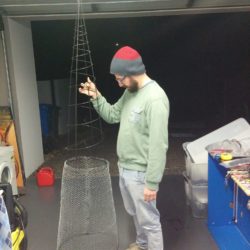
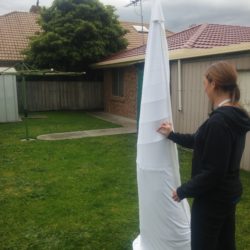
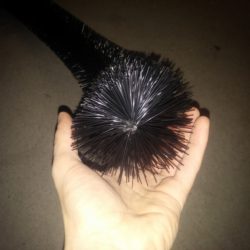

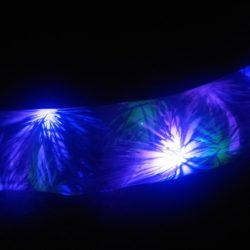 The stem suppose to create an illusion that the SpaceCorn’s core is being hanged from it. Is made out of two parts the stem itself and the stem’s arm. The stem’s base is made out of chicken wire and the tip of it is made out of unmodified
The stem suppose to create an illusion that the SpaceCorn’s core is being hanged from it. Is made out of two parts the stem itself and the stem’s arm. The stem’s base is made out of chicken wire and the tip of it is made out of unmodified
garden cone – the same one that were used to create the tentacles. Cable ties connects the two and creating one-piece structure. 2 star pickets, 2.4m and 1.8m, are pinning down the stem to the ground. Inside the stem’s base lies the 12V PB battery, 240V to 12V battery charger, 12V UV light (similar to the ones that there is inside the tentacles), LED Driver 2 that runs 4 sets of fairy light, sound amplifier and the speakers. Is also means that there are couple of cords going in and out between the stem and the core like the power form the battery, the PWM UV light and the audio from the Raspberry Pi to the sound amplifier.
The stem’s arm is connecting between the stem’s base tip and the core and it creates the “hanging fruit” illusion while holding no weight! This is a huge thing because if it wasn’t for the start picket-beer bottle-overweight design it could have result a huge headache regarding safety and stability.
As of now the fairy lights are not connected to the core and are not being controlled via the logic of the system/the Raspberry Pi. The LED driver 2 runs a simple logic of slow fade in-out and the 2 sets of the fairy lights runs around the stem’s base(warm light & orange) and the other 2(green & purple) runs inside the stem’s arm. We got outstanding result when we berried the lights inside gutter cleaners and sewed a sock-like skin on top of it. It created a magnificent diffusion of the light from inside of the gutter cleaners into the skin of the stem’s arm. 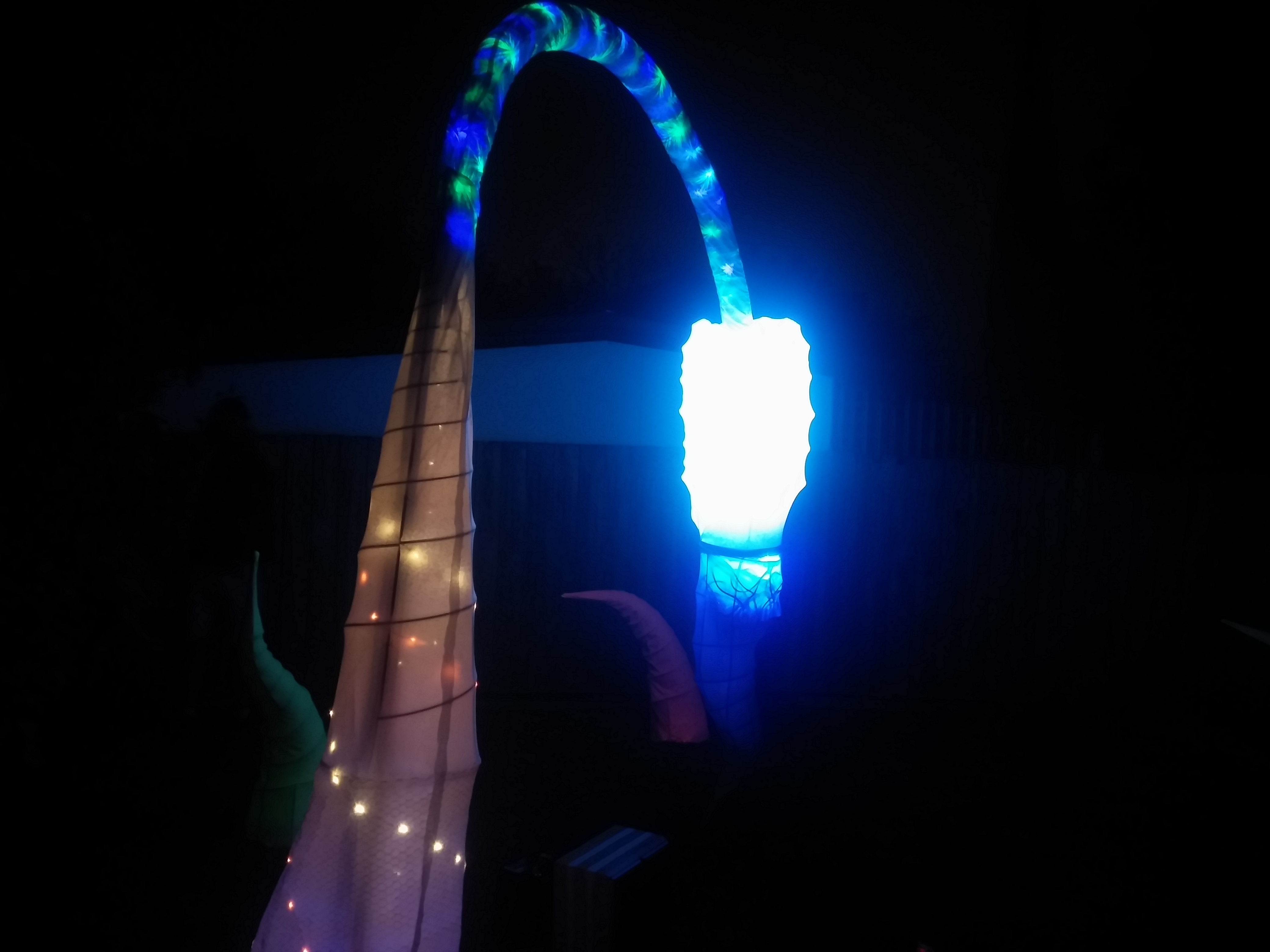
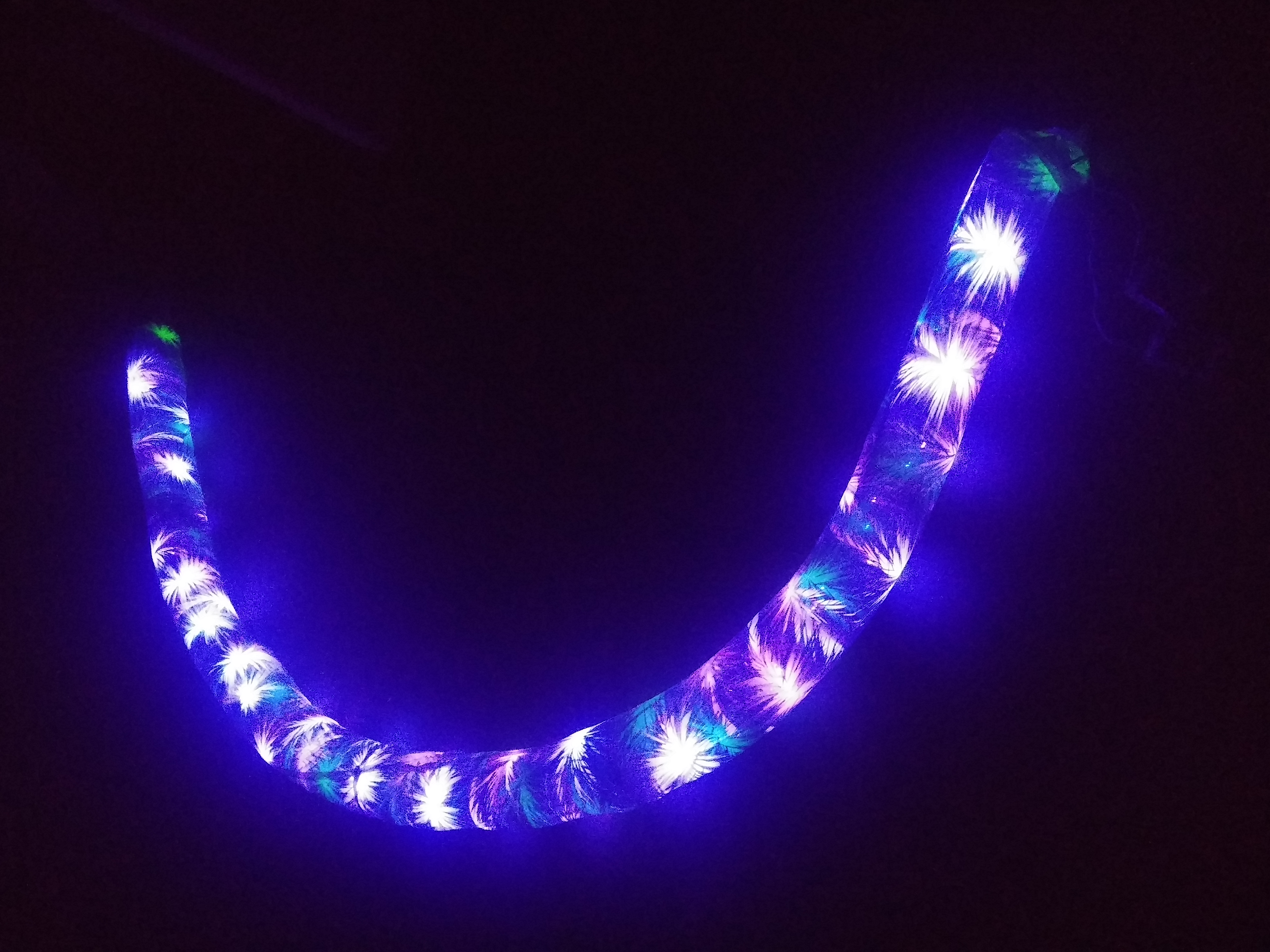
The fall:
Burning Seed 2016 never happened. It got cancelled that year due to floods:
http://burningseed.com/blog/our-most-difficult-post-ever/
We finished the project roughly 2 weeks before Burning Seed 2016 and 3 weeks later than my initially schedule – all in all not that bad.
From a personal point of view, storing it was one of most emotional things that I experienced. Working with a crew on a project for 5 months and then not able to display it. It was devastation but we must grow out of it into something good and bigger.
The future:
As of the date of writing this post we put SpaceCorn in storage for Burning Seed 2017. It might grow even more by than. We have not decided if we are going to display it beforehand or at all in any other festivals before Burning Seed 2017.
Complete time lapse of the build:
